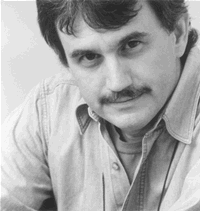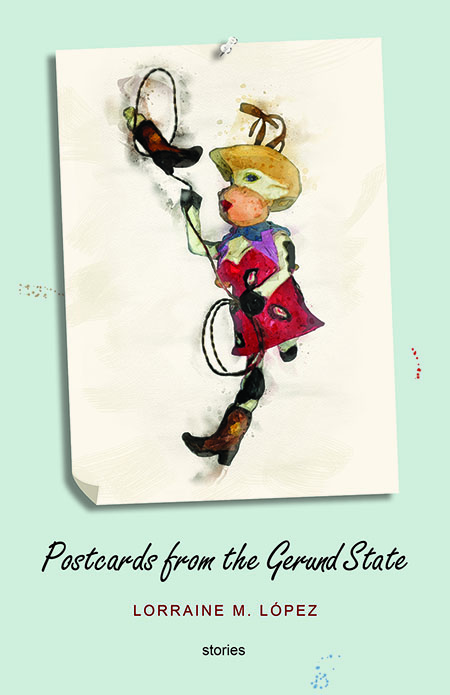Democracy on Ice
James L. Dickerson investigates America’s long reliance on detention camps
Following the attack on Pearl Harbor, Americans of Japanese descent were rounded up by the thousands and placed in primitive “relocation camps” in the interest of national security. With Inside America’s Concentration Camps, investigative journalist James L. Dickerson places that shameful episode inside a larger narrative. Adhering to the psychological theory that abuse begets abusers, Inside America’s Concentration Camps traces America’s ambivalent history of detention and torture, from its beginnings in old-world Europe through the Trail of Tears and World War II to the current internment camp at Guantánamo Bay.
As his starting point, Dickerson—a former staff writer for the Memphis Commercial Appeal—tells the story of his ancestor, Sir James Turner, a onetime Presbyterian dissenter who switched teams and became a violent enforcer for King Charles II. Over the years Turner’s descendants settled in the new world, where they came to exemplify America’s mixed messages regarding abuse and detainment. John Turner, James’s son, for example, was exiled to America where he took a Native American wife and advocated for religious and racial tolerance; James Turner’s great-great-great grandson, Thomas Asbury Turner, on the other hand, kept a slave and supported the Indian-internment policies of President Andrew Jackson.
 Dickerson argues that Jackson’s policies reflected a tenet often employed to defend America’s use of detainment as a political tool: “that white citizens had rights that could not be applied to persons of color.” That fallacy, he continues, also motivated the internment of Japanese Americans during World War II.
Dickerson argues that Jackson’s policies reflected a tenet often employed to defend America’s use of detainment as a political tool: “that white citizens had rights that could not be applied to persons of color.” That fallacy, he continues, also motivated the internment of Japanese Americans during World War II.
Succumbing to right-wing pressure after the Japanese attack on Pearl Harbor, President Franklin Delano Roosevelt issued Executive Order 9066, which called for the imprisonment of Americans of German, Italian, and Japanese heritage. The order, despite evidence to the contrary, assumed that Japanese Americans in particular could not remain loyal during wartime. This belief—combined with the economic, social, and political power of Italian and German American communities at the time—explains why the vast majority of those rounded up during World War II were of Japanese descent. Approximately 120,000 Japanese Americans—both citizens and immigrants—would eventually be classified as “enemy aliens.” Taken from their homes and workplaces, they were relocated to plywood-and-barbed-wire concentration camps in obscure towns like Manzanar, California, and Rohwer, Arkansas. Conditions in the camps were abysmal. Families were separated, and internees were routinely abused. Most were fed canned meals and slaughterhouse scraps and provided little in the way of medical care, running water, or privacy.
Dickerson uses the personal accounts of Japanese internees and their families to detail the nightmare of internment. Though his subjects are varied in terms of social class and status—he includes both immigrants (Issei) and American-born (Nisei) Japanese—their stories have in common a sense of being betrayed by a country founded on principles of inclusion and cultural freedom. Typical are the words of Ruby Inouye, who was a twenty-one-year-old pre-med student before her internment: “We were incensed that we, as Americans, were treated as Japanese aliens … as though we were enemies and we were growing horns and claws.”
From the horrors of the Japanese American experience during World War II, Dickerson makes the short leap to Guantánamo Bay, Cuba. At the Guantánamo detention facility, established during the administration of President George W. Bush, prisoners from war zones in Afghanistan and Iraq have been routinely subjected to torture and psychological manipulation in an effort to gain information regarding terrorist activity against the United States and its allies.
 Dickerson doesn’t lay the blame for Guantánamo solely at the feet of the Bush administration, however. In January 2009, President Obama vowed to close the facility within the year—a promise that has thus far gone unfulfilled. Dickerson also points out that President Obama’s desire to close Guantánamo does not extend to twenty-two other detention centers currently acknowledged by the Department of Homeland Security.
Dickerson doesn’t lay the blame for Guantánamo solely at the feet of the Bush administration, however. In January 2009, President Obama vowed to close the facility within the year—a promise that has thus far gone unfulfilled. Dickerson also points out that President Obama’s desire to close Guantánamo does not extend to twenty-two other detention centers currently acknowledged by the Department of Homeland Security.
Inside America’s Concentration Camps isn’t an anti-American screed. Dickerson includes in his narrative numerous heroes, both civilian and governmental, who refuse to cave in to racist hysteria. Along with crusading journalist Hodding Carter (to whom the book is dedicated), Dickerson mentions California Governor Ralph L. Carr and Roosevelt’s Assistant Secretary of War, John J. McCloy, as being particularly resistant to the idea of Japanese mass internment. If Dickerson’s work is to be faulted, it’s for the lack of space devoted to current issues of detention and torture—of the book’s 320 pages, only twenty-eight address contemporary internments or the future of America’s detention policy.
Dickerson’s frequent use of the term “concentration camp” is deliberate and provocative. While governmental agencies prefer “relocation center” or “internment camp,” such politically correct terms mute the suffering of those who continue to fall victim to American dependence on detention and torture. Until Americans demand an alternative to race-based internment, Dickerson believes that the country will remain in a cycle of victimization and regret. “Two centuries of concentration camps and torture are not the fault of the innocent victims,” he says. “It is the fault of leadership that allows bad things to happen to good people during times of crisis.”
James Dickerson signs Inside America’s Concentration Camps at Davis-Kidd Booksellers in Memphis on September 11 at 1 p.m. and at Davis-Kidd Booksellers in Nashville on September 25 at 2 p.m.


